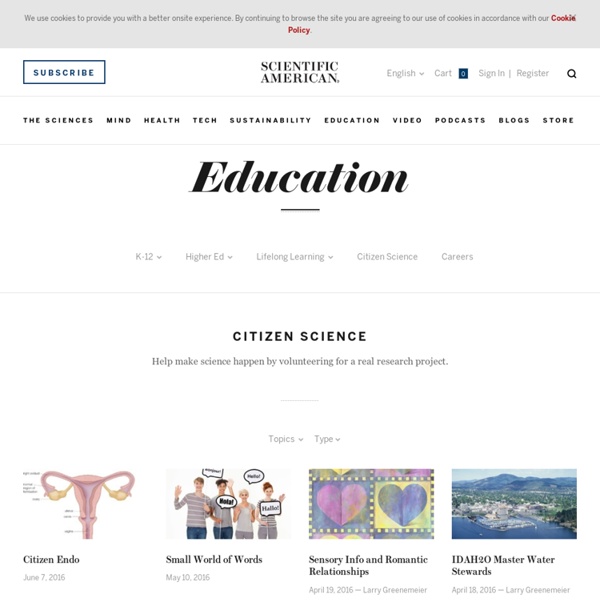



Edukowanie graczy: Czy gry Future of Education? | Obserwacje, Scientific American Network Blog CAMBRIDGE, Mass.—Smart phones, tablets and video game systems are often seen as distractions to school children in developed countries, which tend to adhere to a strict teacher-student educational model. At Technology Review‘s Emerging Technologies (EmTech) conference here on October 25, a panel of technologists and educators posited that it’s time to embrace students’ use of such technologies and rethink learning in both developed and developing countries. “The issue isn’t education or schools—it’s learning,” panelist Nicholas Negroponte, founder and chairman emeritus of M.I.T.’s Media Lab and the chairman of the One Laptop Per Child (OLPC) foundation, said. “The fork in the road is the difference between knowing and understanding. Not a new argument, but Negroponte’s approach to resolving it has been novel. Instead, within four minutes the village children had opened the boxes and learned how to turn on the tablets, he said. Credit: paz.ca/Flickr
Seafloor Explorer Sciences citoyennes Un article de Wikipédia, l'encyclopédie libre. Les sciences citoyennes sont des programmes de recherche associant des scientifiques et une participation « citoyenne » d'amateurs volontaires, d'amateurs éclairés, de spécialistes à la retraite, etc. Elles se sont notamment développées dans le domaine naturaliste, où dans le fil des sociétés savantes des siècles passés, une grande partie du travail se fait sur le terrain sans nécessiter de moyens coûteux ou de laboratoire, permettant à des non-professionnels de contribuer aux avancées en matière de connaissance et d'inventaires. Mais des objets plus lointain, astronomiques notamment font aussi l'objet de sciences citoyennes. Le document Green Paper on Citizen Science: Citizen Science for Europe les décrit dans ces termes (traduction libre) : « ... des activités de recherche scientifique auxquelles des citoyens contribuent activement par un effort intellectuel ou par l'apport de connaissances pertinentes, d'outils ou de ressources.
Surgery Surgical research evaluates technology-driven implanted or implantable medical devices, surgical procedures or surgical devices. For example, a pacemaker is an implantable medical device that supports people with heart problems Surgery research aims to improve surgery productivity and patient outcomes and may include: Comparing the effectiveness of new surgical procedures Studies looking at non-surgical ways of treating people compared to the effectiveness of using surgery Studies looking at quality and organisation of surgery Studies looking at new treatments alongside surgery that can help patient recovery Surgery research is led by, or has significant input from surgeons. breast surgery Cancer surgeries cardiothoracic surgery elective orthopaedic surgery endocrine surgery gastrointestinal surgery vascular surgery
Citizen CyberScience Blog Łukasz Andrzejowski - Portfolio Solve Puzzles for Science | Foldit MilkyWay@Home Citizen Science What is a Citizen Naturalist? Citizen naturalists are people concerned about the environment who choose to help make a difference both locally and nationally. They spend time outside, observing nature with a critical lens. Anyone can be a citizen naturalist – all you need is a passion for nature and helping your community! Some examples of activities commonly performed by citizen naturalists: Cleaning up a local park or stream. Citizen Science Citizen science is where the public volunteers time to assist scientists in their research. Citizen science programs vary in type and scope. Looking for a Way to Get Involved? Fun with Frogs! The Beauty of BirdsThe Cornell Lab of Ornithology manages 12 bird citizen science programs, including Project Feederwatch, NestWatch and eBird. Fabulous Firefly FestivitiesThis summer, Boston's Museum of Science wants you to monitor fireflies. Monarch Mayhem! National Wildlife Federation’s Wildlife Watch Visit Wildlife Watch today!
UCLA = SNC | Technologie tekst - S12 I came across a very interesting post from Miriam Posner this past week linking to a web design research project from UCLA. The website is essentially for an undergraduate research assistantship at UCLA in which the class will be building websites for something entitled, “Immersive Coordinates: Digital Anatolia.” After doing some research on exactly what this means I found that it is a project dealing with the development of a software program that uses archaeological data relating to digs in Turkey. As I looked deeper into this website as well as the Digital Anatolia project it got me thinking about how cool it would be if we, as undergraduate digital humanists at SNC, had the opportunity to do just this.
Online Gamers Achieve First Crowd-Sourced Redesign of Protein Obsessive gamers' hours at the computer have now topped scientists' efforts to improve a model enzyme, in what researchers say is the first crowdsourced redesign of a protein. The online game Foldit, developed by teams led by Zoran Popovic, director of the Center for Game Science, and biochemist David Baker, both at the University of Washington in Seattle, allows players to fiddle at folding proteins on their home computers in search of the best-scoring (lowest-energy) configurations. The researchers have previously reported successes by Foldit players in folding proteins, but the latest work moves into the realm of protein design, a more open-ended problem. "I worked for two years to make these enzymes better and I couldn't do it," says Justin Siegel, a post-doctoral researcher working in biophysics in Baker's group. The latest effort involved an enzyme that catalyses one of a family of workhorse reactions in synthetic chemistry called Diels-Alder reactions. Science by intuition